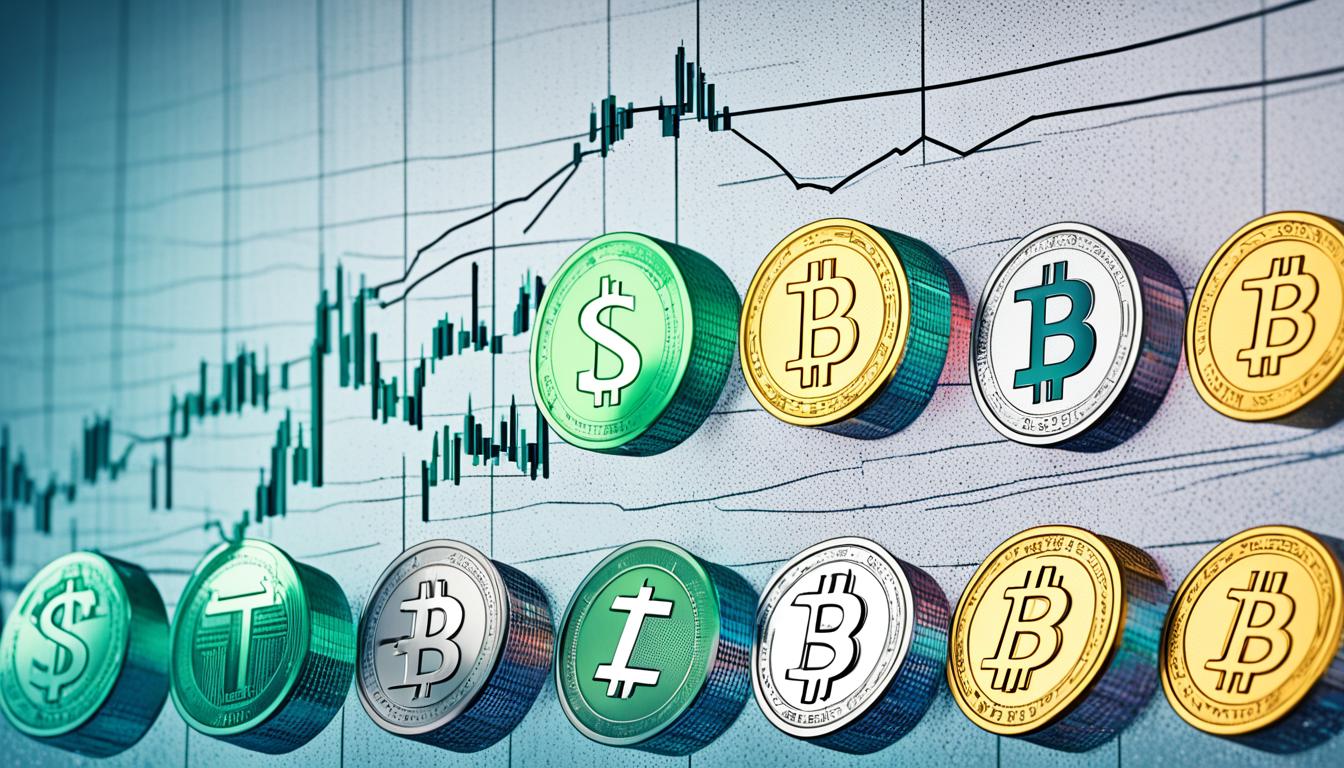Did you know that stablecoins have grown to become a $110 billion market?
Stablecoins, a type of cryptocurrency, have garnered significant attention in the crypto market due to their rapid growth and increasing global use cases. These digital currencies are designed to maintain a stable value by pegging them to a reserve asset like fiat currency or commodities.
What sets stablecoins apart from other cryptocurrencies is their ability to provide stability in an otherwise highly volatile market. They play a crucial role in providing liquidity in the crypto-asset markets and serve as a bridge between official currencies and crypto assets for trading purposes.
However, the growth and interconnectedness of stablecoins with the traditional financial system have raised concerns about potential financial risk contagion channels. Without effective regulatory and oversight frameworks, the widespread adoption of stablecoins could pose risks to financial stability.
Key Takeaways:
- Stablecoins have grown to become a $110 billion market in the crypto industry.
- They provide stability and liquidity in the highly volatile crypto-asset markets.
- Effective regulatory frameworks are needed to mitigate potential financial risks associated with stablecoins.
- Stablecoins serve as a bridge between official currencies and crypto assets for trading purposes.
- The rapid growth and global use cases of stablecoins highlight their importance in the evolving crypto market.
The Importance of Stablecoins within the Crypto-Asset Ecosystem
Stablecoins have emerged as a fundamental component of the ever-expanding crypto-asset ecosystem. Originally introduced to address the volatile nature of cryptocurrencies and facilitate seamless trading, stablecoins have evolved to play a pivotal role in the world of decentralized finance (DeFi).
Leading stablecoins such as Tether, USD Coin, and Binance USD have surged in popularity, dominating the market and accounting for a significant share of trading volumes within the crypto-asset ecosystem. These stablecoins serve as a reliable source of liquidity for decentralized exchanges and lending protocols in the DeFi space, empowering efficient and secure crypto-asset trading and lending.
With the growth of DeFi applications, stablecoins have extended their utility beyond trading. They now function as the primary medium of value transfer within decentralized financial platforms, enabling users to benefit from various financial services such as borrowing, lending, staking, and yield farming.
The significance of stablecoins in the crypto-asset ecosystem cannot be overstated. They provide stability and predictability by pegging their value to established fiat currencies like the US Dollar, ensuring that users can easily navigate the volatile crypto market without constantly converting back to traditional currencies.
The widespread adoption of stablecoins has also fueled the development of innovative financial products and expanded access to financial services for individuals who may not have had previous exposure to traditional banking systems. The seamless integration of stablecoins with blockchain technology has democratized financial opportunities and revolutionized the way individuals interact with the global financial landscape.
Stablecoins: Driving the Future of Finance
The growing importance of stablecoins within the crypto-asset ecosystem is reshaping the future of finance. As more industries and individuals recognize the benefits of decentralized finance, stablecoins will continue to be a catalyst for the adoption of blockchain technology and the democratization of financial services around the world.
Through the combination of liquidity, stability, and accessibility, stablecoins are bridging the gap between traditional financial systems and the crypto economy. Their ability to provide users with a reliable store of value, instant transactions, and borderless accessibility is transforming the way we think about currency and financial transactions.
As the demand for stablecoins and decentralized finance continues to surge, the crypto-asset ecosystem is maturing at an unprecedented pace. Regulatory frameworks and industry standards are rapidly evolving to ensure the transparency, security, and stability of stablecoins, paving the way for a vibrant and sustainable future in the world of digital finance.
The Challenges and Limitations of Stablecoins as Means of Payment
Despite their growing prominence in the crypto market, stablecoins still face challenges when it comes to serving as practical means of payment in the real economy. One of the major hurdles is the slow transaction speeds on certain blockchains utilized by popular stablecoins like Tether, USD Coin, and DAI. These transaction times are not near-instant or real-time, which limits their usability for physical point-of-sale transactions or in the e-commerce space.
In addition to the issue of transaction speeds, stablecoins also encounter regulatory uncertainties and a lack of widely available services for spending stablecoins at merchants. The evolving regulatory landscape surrounding cryptocurrencies poses challenges for stablecoins regarding compliance and consumer protection. This, coupled with the limited acceptance of stablecoins by merchants, hampers their adoption as everyday payment instruments.
However, it’s important to note that stablecoins are constantly evolving, and advancements in blockchain technology could help overcome these limitations in the future. Improvements in scalability and transaction speeds, achieved through upgrades and innovations in blockchain protocols, may enhance the usability of stablecoins as practical means of payment. Moreover, efforts to establish clearer regulatory frameworks and develop partnerships with financial institutions and payment processors could pave the way for greater acceptance and integration of stablecoins into the traditional financial system.
FAQ
What are stablecoins and why have they gained significant attention in the crypto market?
What is the importance of stablecoins within the crypto-asset ecosystem?
What are the challenges and limitations of stablecoins as means of payment?
Source Links
- https://www.investopedia.com/terms/s/stablecoin.asp
- https://www.ecb.europa.eu/press/financial-stability-publications/macroprudential-bulletin/html/ecb.mpbu202207_2~836f682ed7.en.html
- https://www.linkedin.com/pulse/stablecoins-role-risks-cryptocurrency-world-manimama-ibxuf?trk=article-ssr-frontend-pulse_more-articles_related-content-card

Leave a Reply